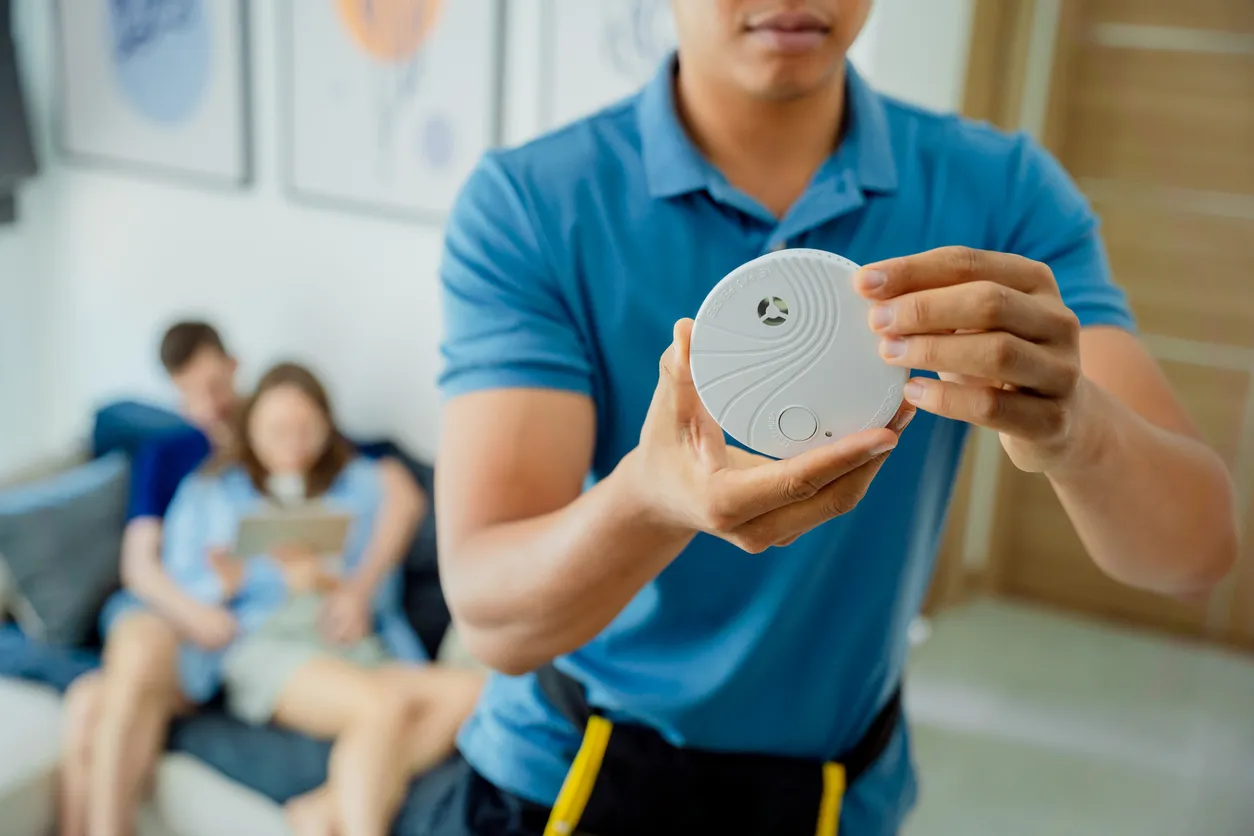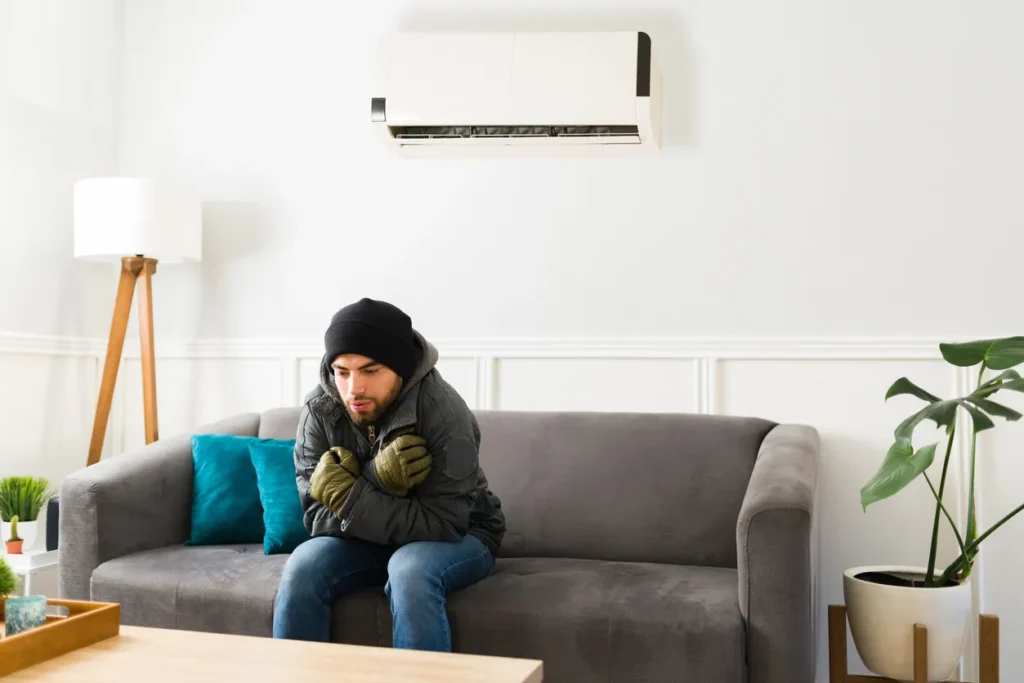Winter HVAC Maintenance Tips: Essential Furnace Tune-Up and Heating System Preparation for Wisconsin Homes
Winter HVAC maintenance refers to the set of seasonal tasks and professional inspections that keep furnaces, boilers, and heat pumps operating safely, efficiently, and reliably during cold months. In Southeastern Wisconsin, where prolonged cold snaps stress home heating systems, proactive winter HVAC maintenance reduces safety risks, improves comfort, and lowers energy use by addressing airflow, combustion, and control issues before they escalate. This article shows homeowners practical, system-specific steps—what you can do, what to leave to a pro, and when to call for service—to preserve heat output and extend equipment life. You will find clear checklists for furnaces, boilers, and heat pumps, safety guidance including carbon monoxide detector testing, and a description of professional services and maintenance-plan benefits tailored to local conditions. Each H2 section includes short how-to lists, comparison tables, and actionable timelines so you can schedule the right tasks before the first major freeze. Throughout, keywords like winter HVAC, heating maintenance, furnace maintenance, and heat pump winter efficiency are woven into practical advice for Wisconsin homes.
Why Is Winter HVAC Maintenance Crucial for Your Home?
Winter HVAC maintenance is crucial because it directly reduces safety hazards, maintains energy efficiency, improves system reliability, and prolongs equipment lifespan by addressing wear, combustion safety, and airflow issues prior to heavy use. Routine checks correct conditions such as restricted airflow, degraded combustion, and thermostat drift, which otherwise increase fuel consumption and risk mid-season breakdowns; solving these early preserves comfort and avoids emergency service calls. For homeowners, small interventions—filter changes, thermostat calibration, outdoor-unit clearance—translate into measurable savings and lower failure risk, especially during Southeastern Wisconsin cold snaps that expose weak components. Understanding these benefits helps prioritize tasks and creates a maintenance rhythm that prevents surprises and keeps utility bills more predictable.
Gregg Heating & AC is a local Southeastern Wisconsin provider focused on heating system maintenance, repairs, and installations for homes in the region. As a resource for homeowners, they offer furnace tune-ups, boiler and heat pump servicing, and a Maintenance Plan that promotes scheduled inspections and priority response during cold weather; this local expertise complements the homeowner-focused steps below. The next sections break down specific benefits of tune-ups and how preventative maintenance improves energy efficiency and safety in practical terms.
What Are the Key Benefits of Regular Furnace Tune-Ups?
A regular furnace tune-up is a targeted inspection and adjustment process that improves combustion efficiency, verifies safety systems, and uncovers developing faults before they cause failure. During a tune-up, technicians typically clean burners, inspect the heat exchanger, test ignition and safety controls, and measure airflow — actions that reduce fuel use and the likelihood of mid-winter outages. Homeowners often see improved heat output and steadier indoor temperatures after service, and preventative replacements of small parts mitigate costly emergency repairs later on. Scheduling tune-ups in fall or early winter ensures systems enter the cold season in optimal condition, which is especially valuable in Wisconsin’s extended heating season.
Regular tune-ups also create a performance baseline for future comparisons, so unusual changes in noise, efficiency, or cycling can be detected sooner. Keeping records of maintenance visits supports informed decisions about replacement timing and helps technicians diagnose changes faster during subsequent calls. The next section explains how these routine tune-up actions translate into concrete energy and safety improvements for your household.
How Does Preventative Heating Maintenance Improve Energy Efficiency and Safety?
Preventative heating maintenance improves energy efficiency by ensuring unrestricted airflow, clean heat transfer surfaces, and accurate thermostat control, which reduces the heat system’s work to reach and maintain setpoints. For example, a dirty air filter restricts airflow and forces the blower and heat exchanger to run harder, increasing fuel or electricity use by notable percentages; addressing that restores designed efficiency and comfort. Safety improvements stem from combustion checks, heat exchanger inspections, and venting validation—all of which detect leaks, cracks, or blockages that could lead to carbon monoxide migration or incomplete combustion. Combining these maintenance tasks reduces both operating cost and safety risk, and it fosters predictable, reliable operation through the cold season.
Beyond immediate gains, consistent preventative maintenance lowers cumulative wear and tear on components like fans, belts, and ignitors, which reduces failure rates over time. Knowing how efficiency and safety are tied to specific tasks makes it easier to prioritize a maintenance checklist and decide which items are appropriate for DIY attention versus professional inspection.
What Is Included in a Comprehensive Winter Furnace Maintenance Checklist?
A comprehensive winter furnace maintenance checklist defines tasks homeowners can perform and checks that require a trained technician, covering air filtration, combustion safety, mechanical inspection, and control calibration. At the homeowner level, changing filters, ensuring vents are unobstructed, and confirming thermostat schedules are practical actions; professional service is required for combustion analysis, heat exchanger inspection, and any fuel-delivery adjustments. This combined approach balances immediate low-cost fixes with deeper inspections that verify safe, efficient operation. The table below compares common furnace components, recommended frequency, whether homeowners can act, and the expected benefit.
Introductory note: the following table clarifies who should perform each task, how often it’s typically needed in winter, and the practical benefit to efficiency and safety.
| Component | Recommended Frequency | Homeowner Action vs Professional | Expected Benefit |
|---|---|---|---|
| Air filter | Every 1–3 months | Homeowner: replace | Restored airflow, lower energy use |
| Heat exchanger | Annually (pre-winter) | Professional inspection | Prevent CO risk, ensure safe combustion |
| Burners/combustion | Annually | Professional cleaning/analysis | Stable heat output, higher efficiency |
| Thermostat calibration | Annually or as needed | Homeowner check; pro for calibration | Accurate temperature control, reduced cycling |
| Blower and belts | Annually | Professional lubrication/adjustment | Reliable airflow, quieter operation |
This table shows that combining homeowner maintenance with annual professional inspections yields the best balance of safety, efficiency, and reliability. The next section explains how often to replace filters and how to optimize thermostat settings for winter comfort and savings.
How Often Should You Replace Your Furnace Air Filter in Winter?
Replace your furnace air filter every 1–3 months in winter, with frequency driven by factors like pets, indoor allergies, household occupancy, and the filter’s MERV rating. High-efficiency or high-MERV filters may trap more contaminants but can also restrict airflow if left too long; inspect monthly and replace sooner if dust buildup is visible or airflow at registers drops. Replacing filters on a consistent schedule maintains designed airflow, reduces blower strain, and keeps heat exchangers cleaner longer, which preserves efficiency and reduces the risk of overheating. Choosing the right filter balances particulate capture with the furnace’s recommended pressure drop—consult the furnace manual or a technician if in doubt.
Simple tips include marking replacement dates on a calendar or using reminder apps tied to heating season start dates. Regular filter changes are one of the highest-impact homeowner tasks for winter HVAC performance and link directly to the thermostat and combustion checks described next.
What Are the Steps to Inspect and Optimize Your Thermostat Settings?
Optimizing thermostat settings begins with defining a comfortable winter setpoint, then verifying the thermostat reads accurately and uses setback schedules that save energy without sacrificing comfort during cold spells. Start by comparing the thermostat reading to a calibrated room thermometer; if readings differ by more than 1–2°F, recalibrate or replace the thermostat. For programmable or smart models, set an efficient schedule that lowers temperatures during sleep and when the home is unoccupied, minimizing auxiliary heat use in heat-pump systems. Additionally, verify fan control settings to ensure the blower cycles as intended for balanced airflow and humidity control.
When thermostats fail to communicate with HVAC equipment or maintain schedules, a professional can test wiring, sensors, and control algorithms or recommend an upgrade that integrates with zone dampers or smart-home systems. Proper thermostat optimization reduces unnecessary runtime and prevents short-cycling, which protects components and saves energy during the long Wisconsin heating season.
How Do You Prepare Your Heating System for Winter: Boilers, Heat Pumps, and Furnaces?
Preparing your heating system for winter requires system-specific tasks that address typical cold-weather stresses—pressure and expansion checks for boilers, defrost and clearance management for heat pumps, and combustion plus airflow verification for furnaces. Each system type has unique failure modes in low temperatures; aligning action to system design prevents breakdowns and improves winter performance. The comparison table below summarizes typical winter issues and recommended homeowner or professional actions for boilers, heat pumps, and furnaces, helping homeowners prioritize before the first sustained freeze.
| System Type | Typical Winter Issue | Recommended Action |
|---|---|---|
| Boiler | Pressure fluctuation, leaks | Check pressure, bleed radiators, inspect for corrosion; call pro for combustion/flue checks |
| Heat Pump | Reduced low-temp capacity, ice accumulation | Clear outdoor unit, monitor defrost cycles, minimize auxiliary heat use; pro for refrigerant checks |
| Furnace | Dirty burners, restricted airflow | Replace filters, inspect vents, schedule professional combustion and heat-exchanger check |
This comparison clarifies which actions are simple homeowner tasks and which require professional tools or combustion analysis. The next subsections unpack boiler and heat pump preparations with practical steps.
What Are the Essential Boiler Winter Maintenance Tasks?
Essential boiler winter maintenance includes verifying system pressure, inspecting expansion tanks and valves, bleeding radiators or zones to remove trapped air, and visually checking for leaks or corrosion that can worsen with freeze-thaw cycles. Homeowners can monitor pressure gauges and top up to recommended levels following the manufacturer’s guidance, while shuttering or insulating exposed pipes reduces freeze risk. Critical safety steps—combustion efficiency testing and flue inspection—require professional equipment and expertise to ensure safe venting and correct fuel-air ratios. Addressing these items before sustained cold reduces the chance of inadequate heat delivery or emergency failures.
Routine winter checks also extend to control settings for zone valves and thermostats to confirm they respond during cold-weather demand. If you notice pressure dropping or persistent leaks, schedule a professional inspection promptly to avoid system shutdown during extreme temperatures.
How Can You Maximize Heat Pump Efficiency During Cold Weather?
Maximizing heat pump efficiency during cold weather focuses on ensuring the outdoor unit has clearance from snow and debris, monitoring defrost cycles, and managing thermostat setpoints to minimize unnecessary auxiliary heat operation. Keep at least one to two feet of clearance around the outdoor unit and remove snow promptly to prevent restricted airflow and coil icing, which degrades heat transfer. Observe whether the system frequently engages backup electric heat; persistent auxiliary use suggests reduced heat-pump capacity at low temperatures or a system issue that benefits from professional assessment. Simple homeowner actions—like keeping registers open and setting gradual temperature changes—help heat pumps operate more efficiently in cold spells.
Professional tune-ups can check refrigerant charge, inspect reversing valves and defrost controls, and verify compressor operation to maintain low-temperature performance. Addressing these items before heavy snowfalls helps ensure reliable heating and avoids sudden performance drops when you need warmth most.
How Can You Ensure HVAC Safety During Winter Months?
Ensuring HVAC safety in winter centers on carbon monoxide (CO) detector testing, vent and flue inspections, and maintaining safe clearances around combustion appliances to prevent CO exposure and fire hazards. Proper ventilation and unobstructed exhaust paths are vital for fuel-burning systems; blocked vents or animal nests can cause combustion gases to accumulate indoors. Regular safety checks detect soot, unusual odors, or visible damage—red flags that warrant immediate action. Below is a safety checklist you can use to verify key items before winter deepens.
Introductory note: use the checklist below as a pre-winter safety triage to reduce CO and fire risks from heating equipment.
- Test carbon monoxide detectors and replace batteries (or verify hardwired system status) before heavy use.
- Visually inspect all vent terminations and chimneys for blockages, nests, or damage.
- Ensure combustible materials are kept clear of furnaces, boilers, and vents by recommended distances.
- Look for soot, yellow burner flames, or unusual smells and schedule professional combustion checks if observed.
After completing the checklist, prioritize professional inspection for any abnormal findings or if detectors consistently alarm. The next subsections explain why CO detector testing is vital and provide duct and vent best-practice guidance.
Why Is Carbon Monoxide Detector Testing Vital for Winter Heating?

Carbon monoxide detector testing is vital because fuel-burning furnaces and boilers can produce CO when combustion is incomplete or when exhaust pathways are blocked, creating a life-threatening indoor hazard that is colorless and odorless. Test detectors monthly, replace batteries annually if not hardwired, and position alarms near sleeping areas and on each floor to ensure early warning during night hours. If an alarm sounds, follow safety steps: evacuate, call emergency services if anyone is symptomatic, and do not re-enter until a professional confirms the area is safe. Regular testing and correct detector placement transform a hidden risk into a manageable safety practice.
Because cold weather increases indoor heating use, the probability of combustion-related issues rises during winter months, making detector maintenance an essential component of any pre-winter checklist. The next subsection covers vents and ducts to prevent both efficiency losses and hazards.
What Are Best Practices for Vent and Ductwork Inspection to Prevent Hazards?
Best practices for vent and ductwork inspection include visually checking for disconnected or crushed ducts, sealing visible gaps with approved materials, and inspecting vent terminations for blockages or animal intrusion that could impede exhaust flow. Homeowners can perform a basic visual survey for disconnections, visible dust patterns, or cold spots at registers, but comprehensive airflow and sealing work typically require professional equipment such as duct blasters and camera inspection. Properly sealed and insulated ducts reduce heat loss and eliminate pathways that could allow combustion gases to enter living spaces, improving both efficiency and safety. If you detect unusual smells, soot, or large temperature differences between rooms, schedule a professional duct inspection promptly.
Sealing and insulating ducts in unconditioned spaces prevents energy waste and reduces system runtime, which in turn lowers component wear and the likelihood of mid-season failures. The following section explains professional services available to help homeowners prepare and protect systems for winter.
What Professional Services Does Gregg Heating & AC Offer for Winter HVAC Preparation?
Gregg Heating & AC provides professional winter-preparation services that include furnace tune-ups, boiler inspections, heat pump seasonal servicing, repair, installation support, emergency weekend response, and enrollment in a Maintenance Plan designed to schedule regular inspections and prioritize service during cold snaps. Their service approach emphasizes quality workmanship, reliability, and local responsiveness for Southeastern Wisconsin homes, helping homeowners translate the DIY checklist into professionally verified safety and performance. Typical service visits combine cleaning, mechanical inspection, control calibration, and safety testing so systems begin winter in an optimized state. Below is a short description of what you can expect from a professional tune-up and how the Maintenance Plan supports ongoing reliability.
What Does a Professional Furnace Tune-Up Include and When Should You Schedule It?
A professional furnace tune-up typically includes inspection and cleaning of burners and ignition components, testing and measuring combustion efficiency, inspecting the heat exchanger for cracks, verifying safety controls and limit switches, lubricating moving parts, checking blower operation and airflow, and ensuring proper venting. Technicians also test thermostat accuracy and may recommend filter types or minor adjustments to improve performance; they document findings so you have a maintenance history for future reference. Schedule a tune-up in fall or early winter—before sustained cold—to ensure safe, efficient operation and to avoid peak-season service delays. Regular tune-ups reduce the risk of mid-winter failures and often reveal small issues that, if addressed proactively, prevent costlier repairs during outages.
How Does the Gregg Heating & AC Maintenance Plan Benefit Southeastern Wisconsin Homeowners?
The Gregg Heating & AC Maintenance Plan offers scheduled tune-ups, priority service during cold-weather demand, and consistent inspections that help prevent breakdowns and preserve system life; these features are especially valuable when local winters create sharp spikes in service requests. The plan emphasizes predictable, recurring visits so technicians can identify gradual performance changes and act before failures occur, and members typically experience faster response times during storms or cold snaps. While details and enrollment steps are available directly through Gregg Heating & AC, the core benefits center on prevention, priority scheduling, and the peace of mind that comes from documented, regular maintenance. For homeowners who prefer a managed approach to winter readiness, the Maintenance Plan reduces the coordination burden and helps maintain comfort throughout the heating season.











